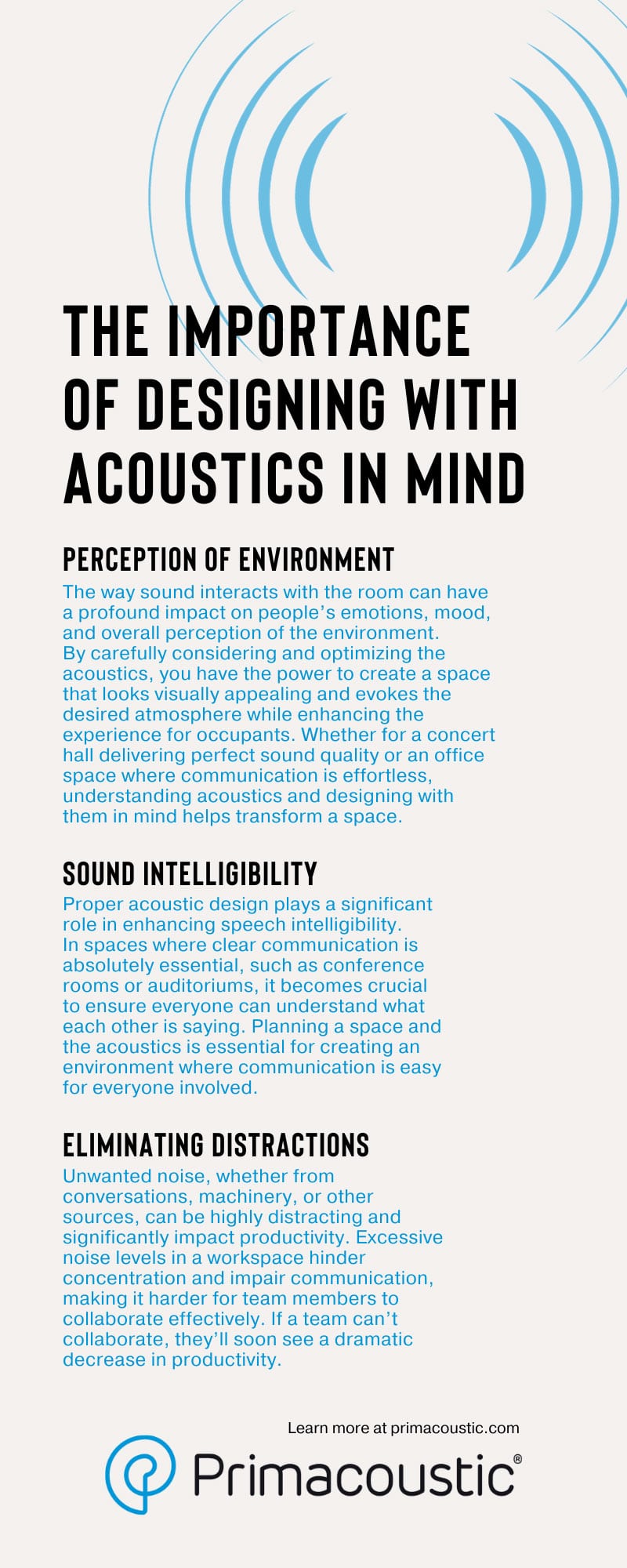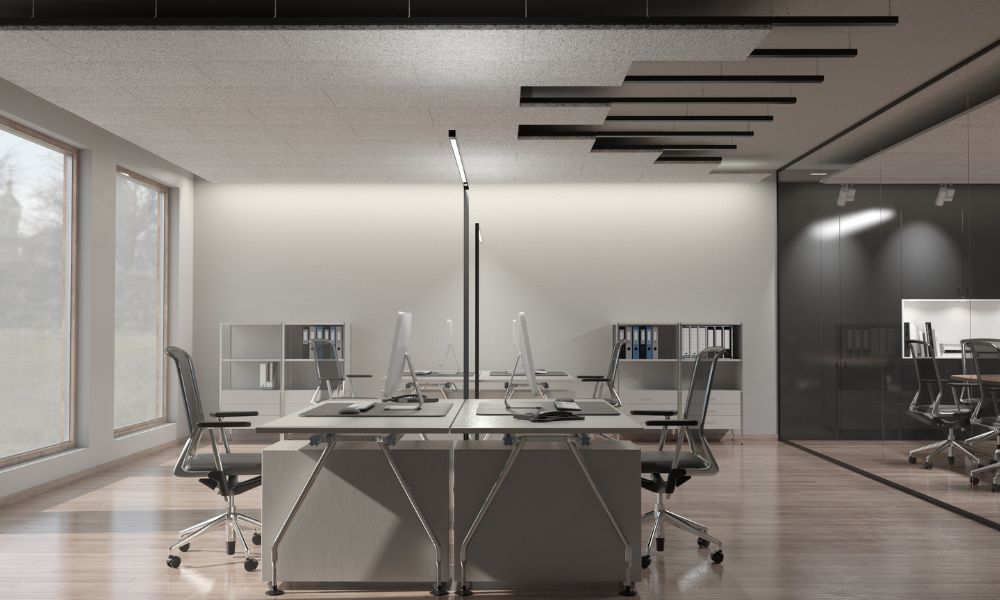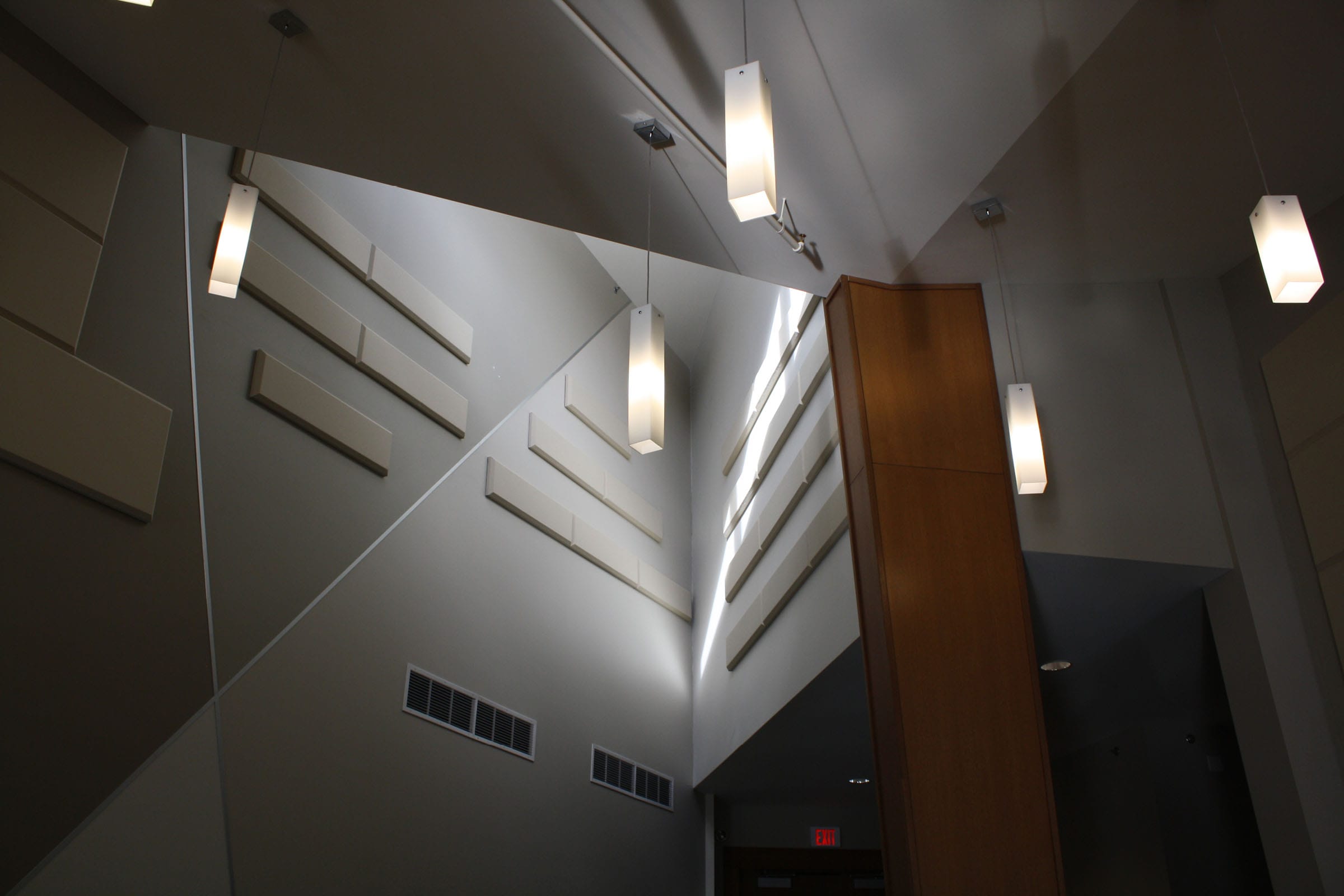As you embark on your next design project, whether it’s for a church, restaurant, classroom, office space, or any other kind of space, it’s crucial to keep acoustics in mind. You must account for how sound travels and interacts with space and make choices that will create a harmonious and functional environment for anyone who enters. Designing with acoustics in mind is important in any design process because it helps ensure that, in the finished space, sound intelligibility is easy.
Perception of Environment
Acoustics are an important component in people’s perception and experience of a space. The way sound interacts with the room can have a profound impact on people’s emotions, mood, and overall perception of the environment. By carefully considering and optimizing the acoustics, you have the power to create a space that looks visually appealing and evokes the desired atmosphere while enhancing the experience for occupants. Whether for a concert hall delivering perfect sound quality or an office space where communication is effortless, understanding acoustics and designing with them in mind helps transform a space.
Sound Intelligibility
Proper acoustic design plays a significant role in enhancing speech intelligibility. In spaces where clear communication is absolutely essential, such as conference rooms or auditoriums, it becomes crucial to ensure everyone can understand what each other is saying. Planning a space and the acoustics is essential for creating an environment where communication is easy for everyone involved. The design of your space should:
- Minimize echoes
- Reduce reverberation
- Mitigate background noise
These variables add up, and if you don’t design with acoustics in mind, you could quickly end up with a space where chaotic noise and distractions are unavoidable.
Eliminating Distractions
Unwanted noise, whether from conversations, machinery, or other sources, can be highly distracting and significantly impact productivity. Excessive noise levels in a workspace hinder concentration and impair communication, making it harder for team members to collaborate effectively. If a team can’t collaborate, they’ll soon see a dramatic decrease in productivity.
However, by incorporating appropriate acoustic designs and acoustic panels, you can create a quieter and more conducive environment for work. A quieter workspace promotes better focus, allowing employees to concentrate on their tasks without the constant interruptions of noise. Without noise and distractions in the way, everyone can be more productive with their time.

Comfort and Well-Being
Good acoustics play a crucial role in creating a sense of comfort and overall well-being. Spaces with the right acoustics can have a profoundly positive impact on your physical and mental state. If you want to create an environment that is comfortable, supports relaxation, and reduces stress levels, you must focus on acoustics.
Designing with acoustics in mind helps you to create an atmosphere that is conducive to work, study, or leisure. Additionally, balanced acoustics can also improve communication and social interactions by minimizing distractions. Investing in good acoustics is an investment in the overall well-being and the quality of everyone’s experiences in the space you’re constructing, whether it’s an office, restaurant, church, or otherwise.
Aesthetic Appeal
Acoustic treatment is a crucial aspect that can significantly enhance the overall aesthetic appeal of a space. However, designing with acoustics in mind doesn’t mean compromising on aesthetics. By carefully selecting appealing acoustic materials, you can integrate sound-absorbing elements into the design, adding a touch of style and sophistication to the space as well as better acoustics. This thoughtful consideration ensures a harmonious blend of functionality and visual allure, creating an environment that is aesthetically and acoustically pleasing.
Enhanced Sound Quality
The right balance of sound absorption and reflection plays a pivotal role in enhancing sound quality. Achieving an optimal balance between sound absorption and reflection is crucial for creating an environment that fosters clear and effective communication. By strategically placing the right acoustic panels, you can effectively reduce unwanted echoes and reverberations. This meticulous approach enhances the clarity, richness, and balance of audio, resulting in a space with much better sound quality.
Effective Communication
Acoustic design plays a critical role in creating optimal spaces for effective communication, particularly in areas such as conference rooms or classrooms. In these settings, where clear and uninterrupted communication is paramount, addressing acoustics becomes even more crucial.
By implementing proper sound control measures, you can create an environment that minimizes unwanted noise but also enhances speech intelligibility. This attention to detail in acoustic design fosters an atmosphere that promotes clear communication, maximizes the effectiveness of interactions, and enhances user experience in these spaces.

Privacy and Confidentiality
Noise control is of utmost importance when it comes to ensuring privacy and confidentiality. In environments such as offices or healthcare facilities, where the need for confidentiality is paramount, effectively managing noise is crucial. When you implement a combination of soundproofing measures and acoustic treatments, such as using sound-absorbing materials and strategically placing barriers, you can create a space that safeguards sensitive information. This attention to detail in noise control fosters an environment of trust and confidentiality, allowing individuals to work and communicate without concerns about compromising privacy.
Safe Working Environment
Acoustics plays a crucial role in ensuring safety, particularly in environments where the risk of sound masking important warning signals is high. For instance, in industrial facilities or emergency response centers, clear communication is critical. With the right acoustic design, you can minimize the possibility of background noise drowning out critical warning signals. This sound intelligibility ensures that everyone can hear and heed important messages, contributing to a safer and more secure environment for all.
A More Inclusive Environment
Designing with acoustics in mind can create a more inclusive environment for individuals with hearing impairments. By considering the unique acoustic needs of individuals with hearing impairments, you can ensure that they have equal access to information and effective communication. This process involves implementing appropriate acoustic treatments, such as sound-absorbing materials or strategic room design. These measures enhance the listening experience for individuals and contribute to a more welcoming and accommodating space for all.
With these important points in mind, it becomes evident that designing with acoustics in mind is something you shouldn’t overlook. By giving due priority to acoustics, you are ensuring a functional and comfortable environment that’s also aesthetically pleasing. If you’re about to embark on your own design but aren’t sure how to properly incorporate acoustics, let Primacoustics help. We know how to design with acoustics in mind, and even after construction, we can help improve sound intelligibility with our high-quality office acoustic panels. Work with us to make sound and clear communication in your space easy!











